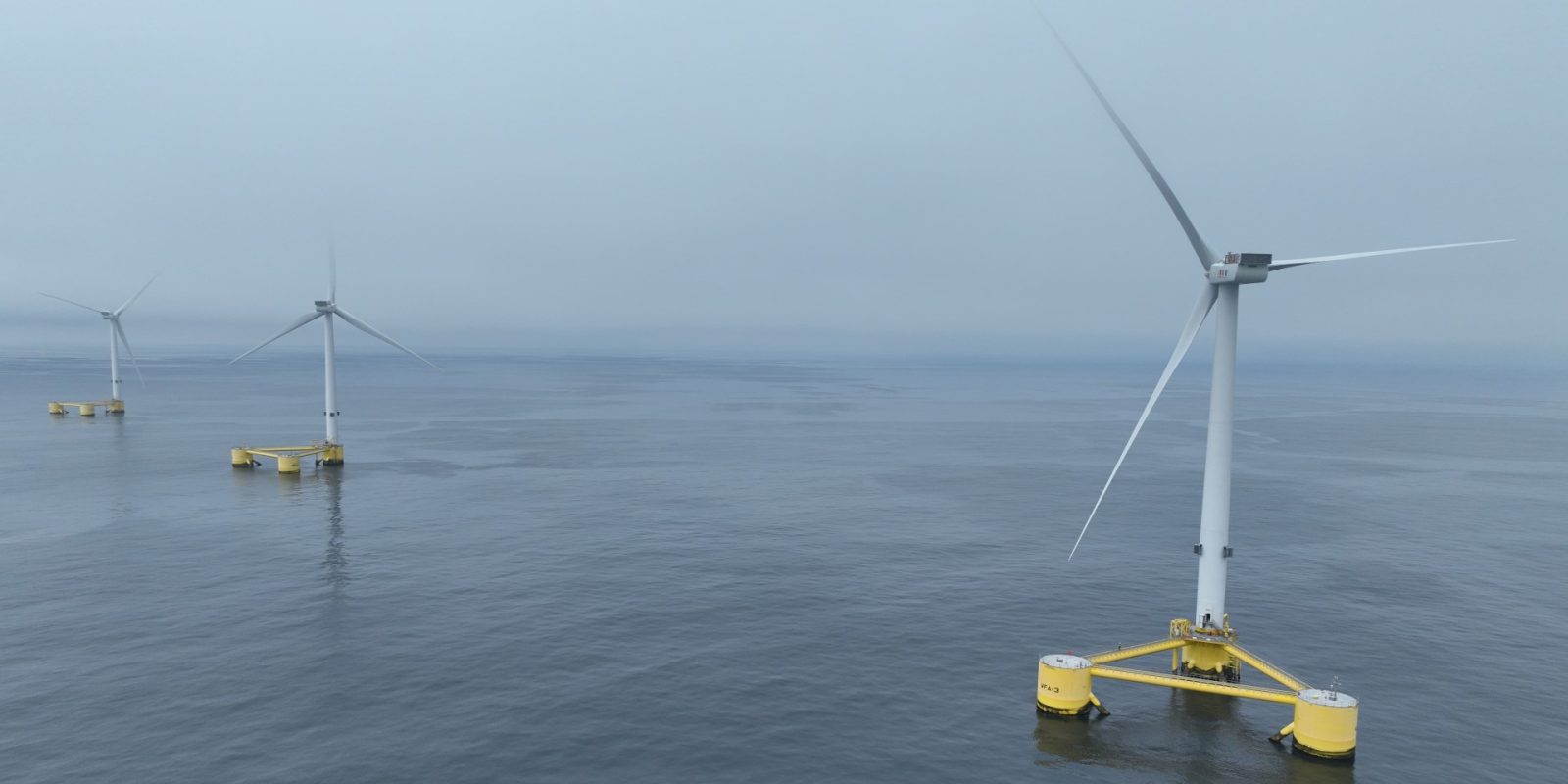
The US has a goal of deploying 30 gigawatts (GW) of offshore wind energy capacity by 2030 – and that can’t happen without floating offshore wind farms.
The Departments of Energy, the Interior, Commerce, and Transportation are today on their second day of a two-day Floating Offshore Wind Shot Summit. The summit’s goal, which is being attended by federal and state government leaders, and industry and labor leaders, is to cut the cost of floating offshore wind energy by over 70% by 2035.
MIT Technology Review noted in December:
Estimates are tricky because the technology is so new, but the US Department of Energy pegs the cost of floating offshore wind at about $200 per megawatt hour. That’s significantly more expensive than the agency’s estimates for land-based wind ($30), solar ($35) and even fixed offshore wind ($80).
The Summit aims to cut the cost to $45 per megawatt-hour. They want to achieve this with “breakthroughs across engineering, manufacturing, and other innovation areas.”
So basically, the Summit is an intense brainstorming session that its delegates then have to roll out in a viable and timely way in order to achieve the Floating Offshore Wind Shot‘s goals:
- Develop cost-effective technologies for deeper waters
- Bring power onshore to areas of high demand
- Create jobs in operations, construction, manufacturing, and more
- Ensure environmental sustainability and ocean co-use
- Expand supply chains including tailoring port infrastructure to support development
- Deploy large amounts of reliable, clean power
- Help revitalize port and manufacturing communities.
Electrek’s Take
Offshore floating wind is now being rolled out all over the world. It’s also really new. In September 2022, a White House brief noted that “globally, only 0.1 GW of floating offshore wind has been deployed to date, compared with over 50 GW of fixed-bottom offshore wind.”
And when it comes to the US, which is the very beginning of its offshore wind deployment, around two-thirds of US offshore wind energy potential is in water that’s too deep for fixed-bottom wind turbines.
The US’s goal is to deploy 15 GW of floating offshore wind capacity by 2035, so it’s got its work cut out to reach this goal. But hey, it put a man on the moon in the 60s, and there’s already a fairly good general grasp of the technology, seeing how it’s already been successfully deployed in places like Norway, Scotland, and Portugal.
The Floating Offshore Wind Shot’s goals are on point, and this effort is going to be herculean and extremely challenging. I’m hopeful, because really cool clean energy innovation that is being used IRL literally lands in my inbox every day. Let’s hope innovation and momentum triumphs at the Summit this week.
Read more: World’s largest floating offshore wind farm is now online
Photo: WindFloat Atlantic, Portugal
UnderstandSolar is a free service that links you to top-rated solar installers in your region for personalized solar estimates. Tesla now offers price matching, so it’s important to shop for the best quotes. Click here to learn more and get your quotes. — *ad.
FTC: We use income earning auto affiliate links. More.





Comments